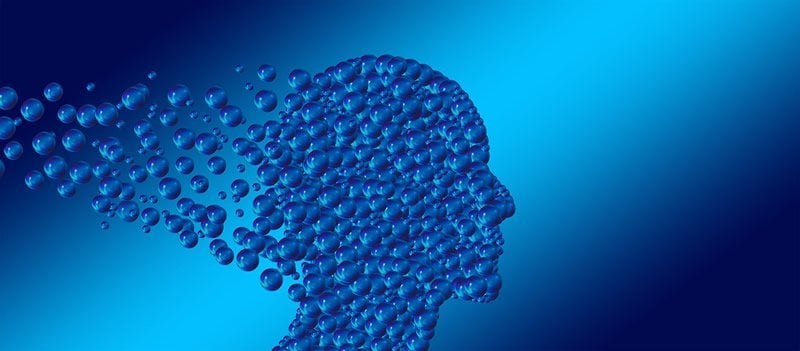Summary: A new framework sheds light on how the mind adapts to different situations. The study proposes a unifying principle for the cortical mechanisms where state of mind is determined.
Source: Bar-Ilan University
We all have our varying mental emphases, inclinations, and biases. These individual dispositions are dynamic in that they can change over time and context. In a study published today in the journal Trends in Cognitive Sciences, Prof. Moshe Bar, a neuroscientist at the Gonda (Goldschmied) Multidisciplinary Brain Research Center at Bar-Ilan University (BIU), together with Noa Herz, of Tel Aviv University, and Shira Baror, of BIU, introduces a new theory that brings us closer to understanding how the mind adapts to various situations.
The authors propose that changing states of mind (SoMs) are holistic in that they exert all-encompassing and coordinated effects simultaneously on our perception, attention, thought, affect, and behavior. They provide evidence and a framework for the concept of SoM, proposing a unifying principle for the underlying cortical mechanism whereby SoM is determined. This novel global account gives rise to unique hypotheses and opens new horizons for understanding the human mind.
According to the theory, the principle dimensions of SoM are directly related to one another and cause one another to change in order to adapt to a particular situation. The SoM aligns them together like a web over a host of mental processes. While SoM are aligned, a single mechanism triggers the synchronous dynamic that gives rise to its all-encompassing nature. Bar and team propose that SoM is determined by the balance between prior experience, or top-down (TD) processing, and input from our senses, or bottom-up (BU) cortical processing. The ratio between the two acts as a ‘steering’ mechanism whereby the brain combines TD and BU signals to varying degrees depending on state, enabling us to adapt in different contexts.
SoM influences the way we experience our environment perceptually and cognitively, how we feel, how we decide, and how we act. Changing SoMs exert all-encompassing and coordinated effects simultaneously on our perception, attention, thought, affect and behavior. They are dynamic states that are flexible within the same individual, an idea that places much less significance on the traditional concept of personality and how it makes us work.
Manipulating SoM can prove beneficial. By acknowledging the dimensions of our SoM and the connections between them, we can influence performance to best match the demands of a given situation. For example, a computer programmer might encounter different tasks that require different cognitive skills. Some of these might include detailed planning of an algorithm that requires attention to detail, reliance on previously acquired knowledge, and narrowed associative thinking. But if the programmer encounters a problem that suddenly calls for new ideas, alternative ways of thinking, and novel programming skills, engaging in tasks that induce broad SoM can assist in fostering the necessary transition.

A state of mind is dynamic and allows us to look at the same situation in different ways. The optimal state of mind is one that best fits a particular context, according to Bar. Because our mood, breadth of thought, and scope of attention are inter-linked, changing one changes the others accordingly. Since the brain can easily switch from one state to another, understanding that we can adapt our state of mind to a particular situation can prove quite beneficial and might just lead to a healthier state of mind. “We are dynamic and versatile organisms, adapted to fit multiple scenarios and numerous situations. Unlike what intuition might have us believe, our mind is not fixed, and our operation is not consistent. Just like our pupils can dilate to best match a specific amount of light, our entire mind can change depending on task and context,” says Bar. Understanding that the mind works on the same principle will allow us to control our state of mind to the extent that this is possible, he concludes.
Funding: This research was supported by a grant from the Israel Science Foundation and by the Sagol Family.
Source:
Bar-Ilan University
Media Contacts:
Elana Oberlander – Bar-Ilan University
Image Source:
The image is in the public domain.
Original Research: Closed access
“Overarching States of Mind”. Noa Herz, Shira Baror, Moshe Bar.
Trends in Cognitive Sciences doi:10.1016/j.tics.2019.12.015.
Abstract
Overarching States of Mind
An individual can demonstrate striking variability in their cognitive, affective, and behavioral inclinations in different contexts.
To account for these dynamics, we offer evidence and a framework for a global concept, that we term SoM, whereby all the diverse dimensions of functioning, from perception and attention to thought, affect, and behavior, are clustered together and change in tandem.
We further propose a unifying principle for the cortical mechanism underlying the overarching SoMs.
This unifying principle postulates that SoM is determined by the balance between TD and BU cortical processing.
We show how this novel proposal can advance theories and approaches in psychology, neuroscience, and psychiatry.
We all have our varying mental emphases, inclinations, and biases. These individual dispositions are dynamic in that they can change over time and context. We propose that these changing states of mind (SoMs) are holistic in that they exert all-encompassing and coordinated effects simultaneously on our perception, attention, thought, affect, and behavior. Given the breadth of their reach, understanding how SoMs operate is essential. We provide evidence and a framework for the concept of SoM, and we propose a unifying principle for the underlying cortical mechanism whereby SoM is determined by the balance between top-down (TD) and bottom-up (BU) processing. This novel global account gives rise to unique hypotheses and opens new horizons for understanding the human mind.







